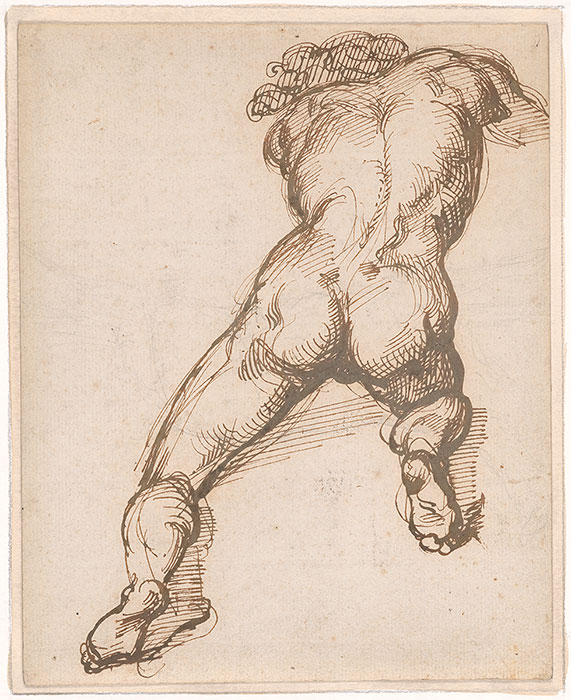

When Géricault returned from Italy in 1817 and began to consider a major painting to submit to the Salon in the following year, he eventually settled on a depiction of the events surrounding the sinking of the Medusa, a government-owned ship that had run aground off the African coast in 1816. Nearly 150 passengers and crew were left adrift on a large raft, although the captain and most officers rowed away in lifeboats. Barely reported by the Ministry of the Navy, the events were soon exposed in French and foreign newspapers and quickly became the means by which the opposition attacked the favoritism and incompetency of the Bourbon government.
Having settled on the incident, Géricault spent 18 months working on his enormous painting, which was finally exhibited in the Salon of 1819 and caused a sensation. A long series of preparatory studies preceded the canvas. Géricault first considered depicting different moments of the story: the rescue of the survivors, the mutiny on the raft, and a scene of cannibalism, before finally settling on the moment when the survivors spot the Argus, the ship that would eventually rescue them, on the horizon.
In all of Géricault's initial sketches for the project, the figure near the center of the composition is shown as a nude man rising to a kneeling position. This figure would continue to evolve, first into the semi-dressed man seen in the oil sketch for the painting (Louvre, Paris), and then into the still-dressed man, sometimes described as an officer, seen in some of the chalk drawings made later in the process and the final painting (see Bazin 1985-89). This sheet, which emerged in 2017 and was unknown to Bazin, is among the several pen and ink studies that constitute the earliest drawings made for the painting, depicting bodies indebted to his study of Michelangelo in Italy. While the artist is known to have studied wax models and cadavers as part of his research for the painting, drawings like the present work were based on live models.
The drawing on the verso seems to represent an Italian church, which raises the question of whether the sheet came from a sketchbook Géricault used in Italy and France. The study of a horse's leg and the inscription (difficult to decipher but probably mentioning a "slate gray Bristol chassis") might relate to a series of drawings by the artist, also of ca. 1818, of horse-drawn stagecoaches such as those in a sketchbook in the Art Institute of Chicago.
Bazin, Germain., and Géricault, Théodore. "Théodore Géricault, Étude Critique, Documents Et Catalogue Raisonné / Germain Bazin." Paris: Bibliothèque Des Arts, 1987.
